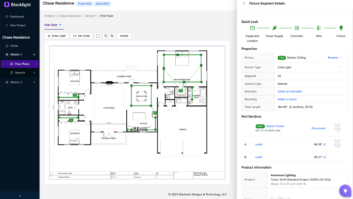One of the most important traits of a successful installer is his or her ability to be and stay efficient and organized.
Being a motivated self-starter and disciplined person goes a long way toward achieving this goal. Im not saying that the best installers out there are Type-A personalities all of the time, but they are the types of people who usually have their act together.
A recent conversation with a local competitor/counterpart will serve to illustrate this point. I recently attended a training in Denver with a very small group of integrators. There were several from abroad, but most were from within a couple hundred miles of here.
I struck up a conversation with a gentlemen from the local market who had the most amazing, super-flashy graphics on the sides of his van. He also had the shirts, business card and website to match. He mentioned that he knew who I was from my articles and that he some business questions. He was confused about his sluggish business despite his strong brand appearance and market saturation. In the last year alone, he had laid off three people, costs were increasing and hed lost long-term customers.
His current labor rate was $65/man hour. This is on the lower end for the better integrators in the Denver market, so I dug further. I asked him how his billing structure was setup. He said that he charges T&M for all service calls and small retrofits, and generates a rough quote for all big projects.
The only thing he seemed to know for sure was that his guys in the field we taking more time to complete every job, that they were making more trips to complete each job, and that there had been more complaints about the quality, quantity and overall amount of time each job was taking to complete. These concerns were coming from clients, builders, designers and management in his company.
Now we were getting somewhere. He then told me that his office manager had left on maternal leave 16 months ago. I asked him what his office manager had been in charge of. The answer? She took care of the inventory at the shop, ordering gear for jobs, payroll… basically all the operational paperwork on a day-to-day basis. I asked if he had replaced her? He said no, hed picked up the financial administration, and promoted one of his installers to project manager. Now wed gotten where I wanted to be to help this gentleman.
I then took a shot out of left field and asked him if I could see his van, since it looked so impressive to me with the fancy graphics and the nice wheels. As he opened the door, two boxes of wire and a ladder came out as if they were spring loaded. This vehicle literally looked as if it had been fully stocked by the local distribution warehouse, then had a small nuclear device detonated inside of it. There was stuff everywhere. Eureka! I had found the problem. I asked him two things; 1) Whose van was this one? And 2) Had they had an increase in excess inventory like wire, parts, excess equipment and the like?
The answers to theses questions were interesting. 1) The van was his project manager/lead installers (remember, the one who runs the shop and does all the ordering now), and 2) Theyd had a noticeable increase in excess stuff.
Got it, now we can fix it.
I suggested to him that it may be possible that the cause of his financial downturn could have direct relationship to the total apparent disorganization of his PM and his field technicians. He replied with the fact that this van was the tidiest in his fleet. Then he said, If you think this is bad, you should see his office.
I told him that he needed to talk with his guys. Have a staff meeting, Id come if he wanted, and discuss the importance of staying organized. He thought it wasnt that big a deal until I proved my point. I asked him to tell me something he knew was on the truck, a tool or a part, specifically a smaller one, that there wouldnt be a whole lot of. He said every vehicle had a roto-zip, in a soft case, with bits. I asked him to find it for me. It took him 45 minutes, but he found it. Because we were in the parking lot, he didnt want to unload the truck, so I then asked him to find me some F-connectors, which he found in about 15 minutes, under a hole-hawg and box of Cat-5e. He was sure that hed found all of the F-connectors on the truck, in a tub marked three port ivory, when he stumbled across four more bags (400) in another tub marked tape. In all, he had found approximately 700 F-connectors on the truck. He said that they had bags and bags at the office as well, and wondered how many were on his other trucks.
I then told him it was obvious to me that hed had had the organization at one time, because he had racks, tubs, labels and a place for everything, that he just needed to get, and keep, everything back in its place.
When he reflected back on what Id said, he realized that his slow, but steady, decline in business and profitability, along with his slow and steady increase in labor hours to get projects finished, might indeed be caused by the total state of disorganization that his vehicles and shop were in. He then thanked me (lightheartedly) for wasting his entire lunch hour proving a point and went back into class. He got the point.
If he spent an hour looking for one tool and some connectors, one time, how much time do think is being wasted by his seven technicians, and PM, in the average week?
Just a quick reminder to all of us to find a place for everything in our industry, and put everything in its place.







